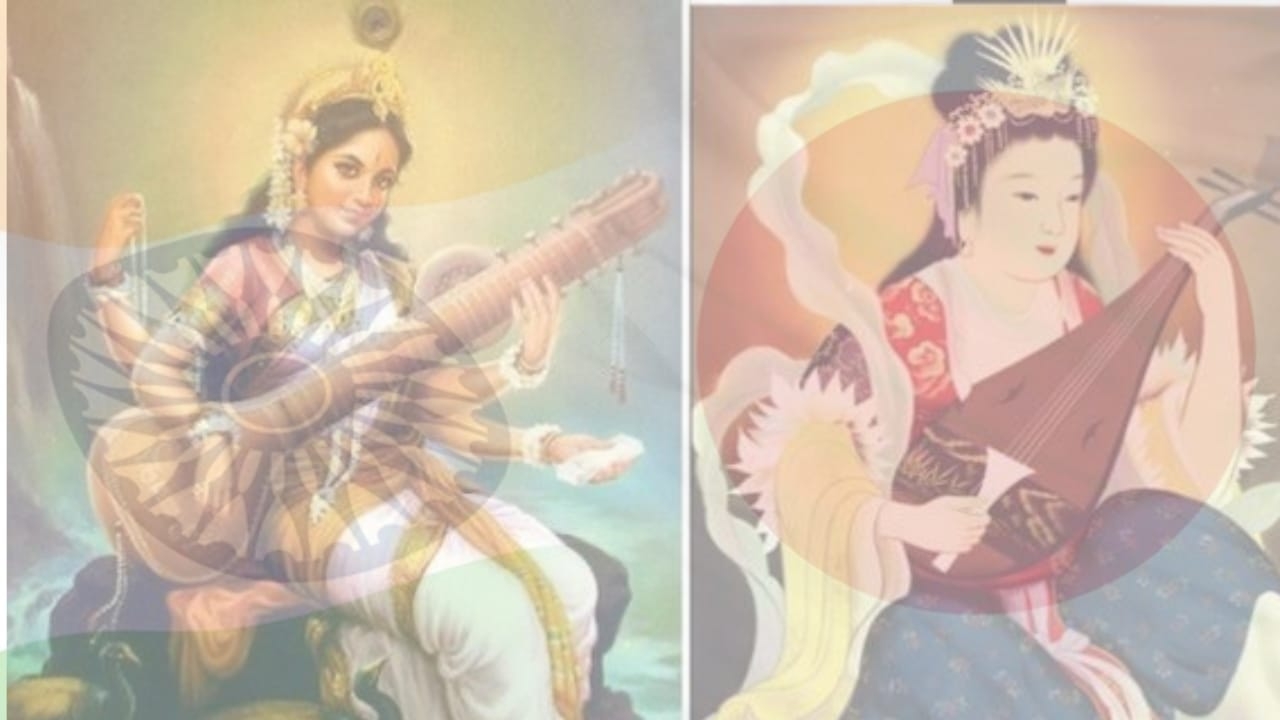Indo-Japanese cultural connect: Indian hands in shaping Japan

India and Japan today are two strategic allies in the Indian Ocean and South China sea, but this cooperation and current congruence of stances is not just a result of need based diplomacy and alignment but is heavily based upon people-to-people relationships.
It is extraordinary in itself that two nations which are approximately 6,000 Kms apart were aware of each other since past thousand years and the latter had great reverence for the former due to the shared Buddhist heritage.
It is not very popular today that India was referred to as ‘Tenjiku’ or paradise since it was the birth place of Lord Buddha and naturally Gods are supposed to ascent from heaven.
Former PM of Japan Taro Aso had once said this about the civilizational ties of Japan and India. "You are a deeply religious people. We are as well, for the Japanese are among the few who believe in the philosophy of transmigration. Take any Buddhist temple in Japan, and see Fuujin, Wind-God, or Rai-jin, Thunder-God. They are all Hindu gods. Without realizing, the Japanese have worshiped your gods century after century”.
Most of the Japanese deities today as worshipped in the Japanese Buddhism are inspired by the Hindu deities.
Examples- of Hindu deities and their Japanese Buddhist counterparts are -
Indra- Taishakuten
Ganesha- Kangi-ten
Narayana - Naraenten
Lakshmi -Kichijōten
Saraswati - Benzaitensama
Kubera or Bishamonten
Today when Lord Ram is the deity of the masses and a great political rallying point in India, it is very interesting that Japan has its own version of the story with a Japanese version of Lord hanuman also.
The Journey To The West is book attributed to Chinese poet Wu Cheng'en based upon the basic outline of the travels of Chinese traveler and monk- Xuang Zang who is represented by the character bearing title of Tang Sanzang (The master of Buddhist Tipitika of the Tang era) It is a story of the Journey of Monk Xuang Zang/XuanZang to Tianzhu/Tenjiku (name for India) to get Buddhist sutras.
In this travel, he is challenged by demons and is assisted by the Monkey lord- Sun Wu Kong or Son Gokū(Japanese) which appears to be derived from the character of Lord Hanuman.
Like lord Hanuman Son Goku was also cursed but was freed by the grace of his master. Can anyone ignore the similarity of this tale with Ramayana where Lord Ram had travelled in the appearance of a monk through forests and had fought with Rakshasas(demons) and was assisted by his devotee Lord Hanuman, the great monkey deity.
Today the story of Journey To The West is a household story and Sun Wo Kong has acquired the status of a revered deity in Japan and China and in other Asian countries and is worshipped in Asian temples such as in the Ruyi Hexin temple.
This cultural connect between India and Japan does not only extends to the deities but also present the form of worship and dietary restrictions involved in the worship of these deities.
It is very interesting that like a large portion of India Hindus, in Japanese monks still maintain a strict vegetarian diet and until as recently as before 1872 during the Meiji era Japan was largely vegetarian and beef was a taboo, until Emperor Mutsuhito brought in radical changes (which had faced resistance) and introduced beef and other meats into the Japanese diet.
The Hindu usage of Beej Mantras is also a Japanese practice. Like the Indian habit of writing Om, Shreem etc. in all things and aspects considered important, in Japan such symbols and mantras are today stamped to the belongings of the devotees in different Japanese monasteries and can be seen in traditional housings and sometimes in katanas where in divine incantations and Mantras of Sanskrit are written in the Bonji script.
Om is also popularly used in the Japanese Buddhism. Sometimes these mantras are combined with Mudras as we know them in India or Kuji-in in Japanese meaning handsigns.
Today In the popular talks in India, it is an unfortunate belief that Lord Buddha had opposed the Hindu scriptures and Yagya rituals. But observing Japanese and Tibetan Buddhism offers the great contrast to this baseless assertion.
In the Buddhist temples in Japan, wooden sticks and offerings are served in ritual fire as an offering to the Gods, in a rite called as Gomagi and Goma-tak, a word derived from Sanskrit term Homa, meaning Yagya. Prof. Richard. K. Payne writes that this ritual as a part of Tantrik Buddhism came to Japan from India.
However, Japan has given these rituals its own color where many aspects have been added to the ritual, but the basic practice of giving offerings to the sacrificial fire remains.
Like Veda mantras, when these Gomagi fire rituals are done difference chants are also chanted in the ways which is easily recognizable to any Indian. This ritual shows us the commonalities in Hinduism and Buddhism where the essence of Hindu worship is also being practiced by the Japanese Buddhists.
India and Sanskrit has also greatly influenced the modern Japanese script - the Kana script from which Hiragana and Katakana have been developed by adopting Indian and Chinese traits.
In 8th century Kobo Daishi (Kukai) a Chinese monk learned in Sanskrit, added Sanskrit syllabary to the Chinese script and created the Kana (Japanese) script. This was based upon the then popular Brahmi script in which Sanskrit language was written.
The modern Japanese Hiragana and Katakana still follows such phonetics and this is one of the reasons that amongst the sharp and high-pitched pronunciations of East Asia, Japanese sounds familiar to the Indian ears.
Today Japan has become a subject of popular talks in India where anime has seen a sudden burst among the youth.
Naruto and One-Piece are every talks today and Japan has acquired a special status and respect in the minds of Indians which view it as a sister civilization carrying the same values as India itself.
The friednhsip between India and Japan also appears a natural one when they both face a rising China in there periphery and a change in the world order where the west appears to be receding.
Article by

Shreeacharya Mishra
Younginker
Raipur, Chhattisgarh